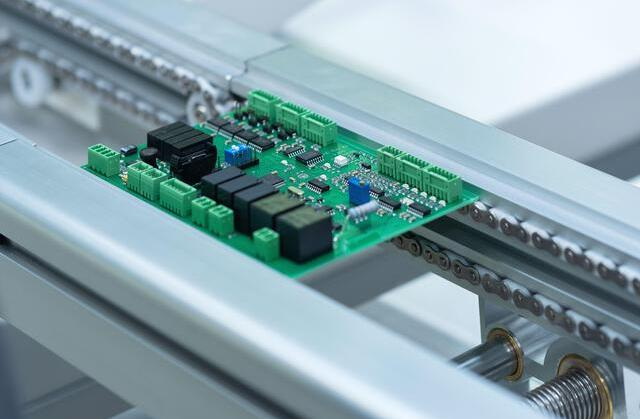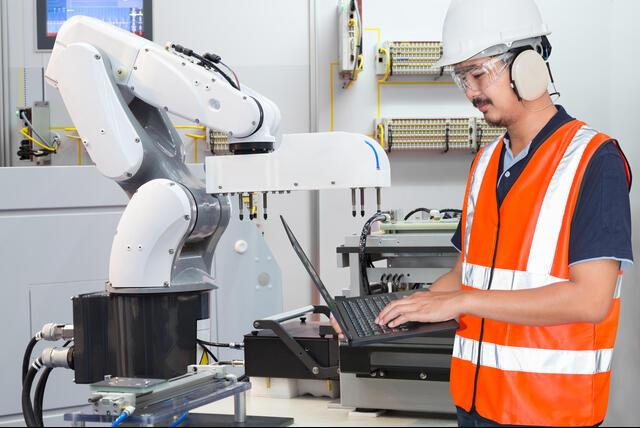Content Menu
● Introduction
● Key Maintenance Practices
>> 1. Environmental Control
>> 2. Regular Equipment Maintenance
>> 3. Calibration and Debugging
>> 4. Operator Training
>> 5. Continuous Monitoring and Improvement
● Best Practices for Workflow Optimization
>> Material Handling
>> Layout Optimization
● Technological Innovations
● Preventative Maintenance Strategies
● Conclusion
● FAQ
>> 1. What is the ideal temperature and humidity for SMT lines?
>> 2. How often should SMT equipment be calibrated?
>> 3. What are common maintenance tasks for SMT machines?
>> 4. How can automation improve SMT line efficiency?
>> 5. Why is operator training important in SMT lines?
● Citations:
Introduction
Printed Circuit Board (PCB) Surface Mount Technology (SMT) solution lines are the backbone of modern electronics manufacturing. Ensuring their efficiency and reliability is crucial for producing high-quality electronic products. This article explores the best practices for maintaining a PCB SMT solution line, focusing on key maintenance practices, workflow optimization, and technological innovations.

Key Maintenance Practices
1. Environmental Control
Maintaining optimal environmental conditions is essential for the smooth operation of SMT lines. Temperature and humidity levels should be carefully monitored and controlled. For instance, the ideal temperature range is 68-78°F, while humidity levels should be maintained between 35-65% to prevent defects such as solder paste drying or excessive water absorption. High humidity can lead to issues like solder paste slumping, while low humidity can cause flux to evaporate too quickly, leading to poor solder joints.
- Humidity Monitoring: High levels of humidity in a manufacturing environment can lead to serious issues such as slumping, where solder paste absorbs too much water and causes bridging during reflow, and solderballing (or “popcorning”), resulting from excessive water absorption and poor coalescence. Out-gassing can also occur, where water creeps under surface mounts, especially Ball Grid Arrays (BGAs), causing pressure build-up that can blow off covers.
- Temperature Monitoring: High temperatures in a manufacturing environment decrease solder paste viscosity, leading to issues such as paste smearing and slumping, which can cause bridging and solderballing defects like voiding. Additionally, elevated temperatures may increase solder oxidation, compromising solderability. Low temperatures can increase solder paste viscosity, resulting in poor printing behavior.
2. Regular Equipment Maintenance
Routine maintenance tasks like cleaning, lubrication, and replacing worn parts are vital. These practices help prevent unexpected downtime and extend the lifespan of SMT equipment. Key components such as nozzles, belts, and feeders should be inspected regularly.
- Cleaning: Regular cleaning prevents dust and dirt build-up that can interfere with machine operation.
- Lubrication: Proper lubrication reduces friction and wear on moving parts.
- Replacement of Worn Parts: Consumables like nozzles and belts should be replaced as they wear out to maintain efficiency.
3. Calibration and Debugging
Periodic calibration ensures that SMT machines operate with precision. Debugging processes help identify and rectify issues early, maintaining the accuracy of component placement and soldering. Regular calibration of pick-and-place machines and solder paste printers is essential to prevent errors in production.
4. Operator Training
Well-trained operators are indispensable for the efficient functioning of SMT lines. Training programs should focus on equipment operation, troubleshooting, and maintenance to minimize errors and enhance productivity. Operators who understand the machinery can quickly identify issues and implement solutions.
5. Continuous Monitoring and Improvement
Data analytics and predictive maintenance tools can be used to monitor equipment performance and identify potential issues before they escalate. Continuous improvement strategies ensure that the production line remains efficient and competitive. Implementing a feedback loop where operators report issues can also drive improvements in processes.
Best Practices for Workflow Optimization
Efficient PCB handling, automated processes, and stringent quality control measures are key to optimizing workflow in an SMT line:
- Automated Loaders/Unloaders: These systems ensure precise positioning of PCBs onto conveyor belts, minimizing misalignment risks.
- Inline Inspection Systems: Automated vision systems scan PCBs for defects early in the production process, allowing for real-time corrections.
- Standardized Operating Procedures: Implementing clear procedures for each stage of production enhances consistency and efficiency.

Material Handling
Efficient material handling is crucial for maintaining a smooth SMT production line setup. Implementing a just-in-time (JIT) inventory system helps reduce waste while ensuring that materials are available when needed. Proper storage solutions for sensitive components are also essential.
Layout Optimization
The layout of the SMT line should minimize material handling while ensuring adequate space between machines for easy access during maintenance. Ergonomics should also be considered to enhance operator comfort and safety.
Technological Innovations
Adopting advanced SMT equipment and leveraging technologies like machine learning for quality control can significantly improve production line performance:
- Automated Solder Paste Application: This technology ensures consistent application of solder paste across all boards.
- Real-Time Defect Detection Systems: These systems enhance both efficiency and product quality by identifying defects as they occur.
Investing in state-of-the-art SMT line machines that offer enhanced precision, faster cycle times, and improved defect detection capabilities is essential for staying competitive in the market.
Preventative Maintenance Strategies
Preventative maintenance is crucial in reducing downtime associated with unexpected equipment failures:
- Scheduled Inspections: Regular inspections help identify wear on parts like feeders, nozzles, placement heads, spindles, and rails.
- Replacing Consumables: Consumable parts like feeders, nozzles, conveyor belts, and pneumatic components should be regularly checked and replaced to prevent failures due to faulty consumables.
- Data Analytics: Utilizing data from inspection systems allows manufacturers to identify trends in equipment performance that may indicate potential failures or inefficiencies.
Conclusion
Maintaining a PCB SMT solution line requires a combination of regular maintenance, workflow optimization, technological advancements, effective material handling practices, layout optimization strategies, and robust preventative maintenance approaches. By implementing these best practices, manufacturers can ensure high efficiency, reduced downtime, superior product quality, and ultimately achieve long-term success in electronics manufacturing.

FAQ
1. What is the ideal temperature and humidity for SMT lines?
Temperature: 68-78°F, Humidity: 35-65%, depending on specific requirements.
2. How often should SMT equipment be calibrated?
Calibration should be performed periodically according to manufacturer recommendations.
3. What are common maintenance tasks for SMT machines?
Common tasks include cleaning, lubrication, inspection of moving parts for wear or blockage, calibration checks, and replacement of consumables.
4. How can automation improve SMT line efficiency?
Automation reduces human error by enhancing consistency in processes such as component placement and inspection while speeding up production cycles.
5. Why is operator training important in SMT lines?
Trained operators can quickly identify issues with machinery operations or processes which helps maintain smooth operations throughout production.
Citations:
[1] https://fourtec.com/blog-post/best-practices-for-monitoring-environmental-conditions-in-smt-lines/
[2] https://www.smtfactory.com/Importance-And-Steps-of-Routine-Maintenance-on-A-Chip-Mounter-id65408017.html
[3] https://smtnet.com/news/index.cfm?fuseaction=view_news&company_id=58069&news_id=30605
[4] https://hawkerrichardson.com.au/blog/win-with-smt-preventative-maintenance/
[5] https://m.smt11.com/blog/SMT-Field/SMT-Equipment-Maintenance-4774.html
[6] https://www.smtfactory.com/Essential-Steps-for-SMT-Production-Line-Setup-id49117676.html
[7] https://www.ednasia.com/top-12-incredible-techniques-to-control-the-quality-of-pcb-smt-assembly/
[8] https://goldlandsmt.com/how-to-maintain-an-smt-machine/
[9] https://www.smtfactory.com/Perfecting-Your-SMT-Line-Layout-for-Efficiency-id47017676.html
[10] https://www.hayawin.com/news-how-do-you-handle-pcbs-in-smt-production-line.html
[11] https://www.sunzontech.com/how-to-do-smt-pick-and-place-machine-maintenance-work/
[12] https://www.adoptsmt.com/en/efficiency-enhancement-in-smt-manufacturing/
[13] https://www.smtfactory.com/Optimizing-Efficiency-Strategies-for-A-Smooth-SMT-Line-Production-Process-id47463586.html
[14] https://iconnect007.com/index.php/article/52613/smt-preventive-maintenance-stop-5-major-problems-with-pick-and-place-nozzles/52616
[15] https://www.linkedin.com/pulse/essential-practices-long-lived-smt-lines-hawker-richardson
[16] https://jhdpcb.com/blog/efficient-smt-assembly/
[17] https://www.zestron.com/usa/en/applications/smt/maintenance%20cleaning
[18] https://resources.pcb.cadence.com/blog/2020-how-to-optimize-pcb-design-for-smt-assembly-process-flow
[19] https://www.macdermidalpha.com/sites/default/files/2021-09/ALPHA%20SMT%20Troubleshooting%20Guide%20EN%2001Jun20%20BR_0.pdf
[20] https://blogs.sw.siemens.com/valor-dfm-solutions/how-to-optimize-pcb-design-for-the-smt-assembly-process-flow/




















